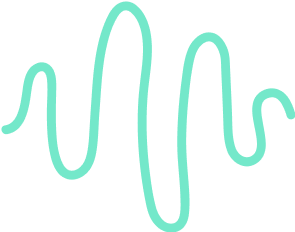COO Meeting Agenda & Minutes Template
.svg)
Management
.svg)
Meeting Purpose & Scope
Set a clear objective for each COO meeting (e.g., monthly operations review, quarterly strategic check‑in) so participants know what success looks like.
- Meeting cadence: weekly / monthly / quarterly
- Time‑box: 60–90 min (adjust based on agenda sections)
- Output: decisions logged, actions assigned, risks escalated
.svg)
Pre‑Meeting Preparation
- Distribute the agenda & relevant reports 48 h in advance.
- Update your functional KPI dashboard so the latest numbers appear in the deck.
- Flag any critical risks that require COO sign‑off.
.svg)
Attendees & Roles
List the core operating leaders in attendance and their roles during the meeting:
.svg)
Operational Metrics Review
Highlight trends, variances, and root‑causes for the KPIs that the COO tracks:
- Operational throughput
- Service‑level compliance
- Cost per unit
- Customer satisfaction (CSAT/NPS)
.svg)
Project & Initiative Updates
For each strategic initiative, cover:
- Status: on track / at risk / off track
- Milestones achieved since last meeting
- Blockers needing escalation
.svg)
Risk & Issue Escalation
Escalate issues that exceed team tolerances (budget, timeline, quality, compliance):
- Summarize impact & probability
- Recommend mitigation or decision required
- Assign an owner & deadline
.svg)
Resource & Capacity Planning
Review capacity forecasts vs demand and decide on hiring, outsourcing, or reprioritizing work.
.svg)
Decision Log & Approvals
Document formal approvals (budgets, policy changes) in a decision log table for audit:
IDDecisionOwnerDateDL‑023Increase production line capacity by 15%COO2025‑06‑03
.svg)
Action Items & Owners
Capture each action with:
- Clear verb (e.g., Submit, Validate, Deploy)
- Single accountable owner
- Due date
- Status tracking (open / in progress / done)
.svg)
Next Steps & Meeting Close
Confirm:
- Summary of key decisions (read back)
- Date & focus of next COO meeting
- Feedback round: rate usefulness on a 1‑5 scale & suggest improvements
.svg)
.svg)
.svg)
.svg)
.svg)
.svg)
.svg)
.svg)
.svg)
.svg)
.svg)
.svg)
Why use a structured COO meeting template?
COO meetings often cover a vast operational landscape—KPIs, projects, risks, and resource allocation. A clear, repeatable agenda keeps the discussion focused on what matters most: data‑driven insights and decisive actions.
How to run the meeting
- Circulate the agenda and data pack at least two days beforehand.
- Start on time and follow the minute‑by‑minute agenda table below.
- Use a shared screen for dashboards and project trackers.
- Document decisions and actions in real time—don’t leave it for later.
- End with a feedback poll to continuously improve meeting efficiency.

Forget note-taking and
try Noota now
FAQ
In the first case, you can directly activate recording as soon as you join a videoconference.
In the second case, you can add a bot to your videoconference, which will record everything.
Noota also enables you to translate your files into over 30 languages.

.svg)
.svg)
